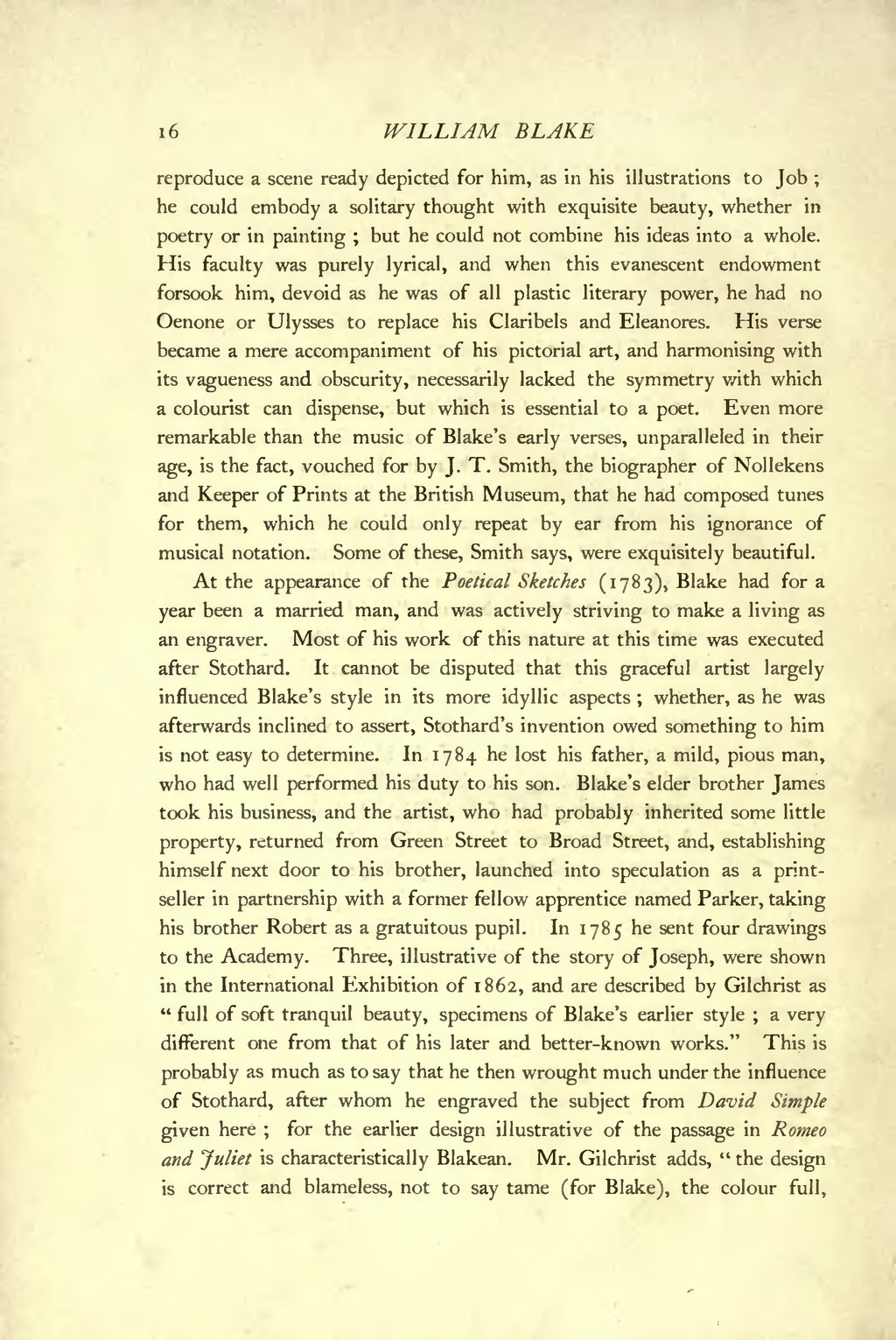reproduce a scene ready depicted for him, as in his illustrations to Job; he could embody a solitary thought with exquisite beauty, whether in poetry or in painting; but he could not combine his ideas into a whole. His faculty was purely lyrical, and when this evanescent endowment forsook him, devoid as he was of all plastic literary power, he had no Oenone or Ulysses to replace his Claribels and Eleanores. His verse became a mere accompaniment of his pictorial art, and harmonising with its vagueness and obscurity, necessarily lacked the symmetry with which a colourist can dispense, but which is essential to a poet. Even more remarkable than the music of Blake's early verses, unparalleled in their age, is the fact, vouched for by J. T. Smith, the biographer of Nollekens and Keeper of Prints at the British Museum, that he had composed tunes for them, which he could only repeat by ear from his ignorance of musical notation. Some of these, Smith says, were exquisitely beautiful.
At the appearance of the Poetical Sketches (1783), Blake had for a year been a married man, and was actively striving to make a living as an engraver. Most of his work of this nature at this time was executed after Stothard. It cannot be disputed that this graceful artist largely influenced Blake's style in its more idyllic aspects; whether, as he was afterwards inclined to assert, Stothard's invention owed something to him is not easy to determine. In 1784 he lost his father, a mild, pious man, who had well performed his duty to his son. Blake's elder brother James took his business, and the artist, who had probably inherited some little property, returned from Green Street to Broad Street, and, establishing himself next door to his brother, launched into speculation as a print-seller in partnership with a former fellow apprentice named Parker, taking his brother Robert as a gratuitous pupil. In 1785 he sent four drawings to the Academy. Three, illustrative of the story of Joseph, were shown in the International Exhibition of 1862, and are described by Gilchrist as "full of soft tranquil beauty, specimens of Blake's earlier style; a very different one from that of his later and better-known works." This is probably as much as to say that he then wrought much under the influence of Stothard, after whom he engraved the subject from David Simple given here; for the earlier design illustrative of the passage in Romeo and Juliet is characteristically Blakean. Mr. Gilchrist adds, "the design is correct and blameless, not to say tame (for Blake), the colour full,
